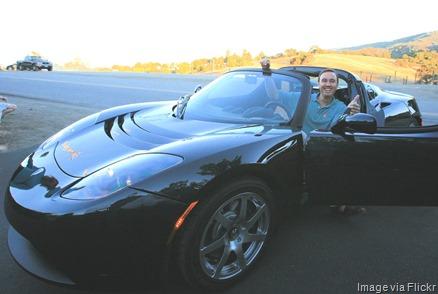 The world keeps changing, and visible business strategies that worked well in the past, including being the premium brand or low price producer, simply don’t get the customer loyalty they once did. Today, customers are looking for real relationships, a memorable shopping experience, and satisfaction of a higher purpose. They follow leaders who live and promote these strategies.
The world keeps changing, and visible business strategies that worked well in the past, including being the premium brand or low price producer, simply don’t get the customer loyalty they once did. Today, customers are looking for real relationships, a memorable shopping experience, and satisfaction of a higher purpose. They follow leaders who live and promote these strategies.
For example, Tesla and Elon Musk have capitalized on the environmental benefits of electric vehicles, coupled with a more memorable shopping experience by eliminating dealers. Other companies, including Ritz-Carlton, now incent their employees to build real relationships with guests, by authorizing them to spend up to $2,000 per guest to solve an individual concern.
Of course, these new customer-facing strategies shouldn’t preclude you from focusing behind the scenes on reducing costs and broadening your product line to supersede competitors. Amazon and Jeff Bezos have managed to do this well, with customers only remembering the fun and ease of shopping online, seemingly instant no-cost delivery, and no-hassle returns or replacements.
If you are rolling out a new business, or focusing on a revamp for your existing one, here is a summary of the key elements I recommend as a long-time business advisor for a winning customer-centric strategy today:
Demonstrate a commitment to purpose and vision. What you say in your mission statement means nothing unless customers see you and your team living it every day. They need to see results in the form of sponsored events, social media, and feedback from influencers and customers that your mission is more than the low-cost producer.
Whole Foods, for example, have continuously demonstrated their commitment to natural and organic foods, and have amassed an large and intensely loyal customer following for their 475 stores. As a result, they recently were acquired by Amazon for $13.5 billion.
Highly focused customer segment targeting. This has to start with doing the customer interaction work to isolate the needs and drivers in the market you intend to serve. Trying to be everything to everyone doesn’t work any more. You need your team to be engaged with customers, finding what gets them excited, and tuning your message and offerings.
In addition to their focus on purpose, Whole Foods continues to target high-income, educated city-dwellers who are health- or eco-conscious. This approach may not have worked in the startup days of traditional grocery stores, but it fits today’s urban reality.
Dominate your industry before expanding to others. Many businesses are too quick in their efforts to become a conglomerate like General Electric, rather than globally dominating the one they are best suited for. Today, scaling an existing business in a large interconnected environment is generally easier than growing a disparate portfolio.
Apple, as an example, have consistently focused on consumer electronics, since their early days with personal computers. They now dominate that industry, and achieved massive growth, loyalty, and credibility, without trying to move into enterprise solutions.
Align employee incentives with customer values. Many companies still measure and reward employee productivity on internal processes, such as service calls closed per hour or revenue generated, rather than delighted customers. Results in the short-term may be optimized at the expense of repeat business, customer advocates, and loyalty.
Seek opportunities to leverage competitor shortcomings. Make sure that everyone in your business understands your competitive advantage from a customer perspective, and continually seeks to optimize it. This requires continuous communication up front, agility in adapting to change, and continuous innovation improving satisfaction and experience.
Above all, continuing success requires a constant focus on strategy, and an agility to move quickly with the latest trends and innovation. Too many existing business become complacent, and the world changes around them, including former growth leaders Radio Shack, Nokia, and Enron. All too quickly, customers move on to other players that address their changing needs.
If your business strategy today doesn’t reflect one or more of the elements outlined here, your time for change may be past due. Winning customers in business is a lot more fun than the alternatives.

